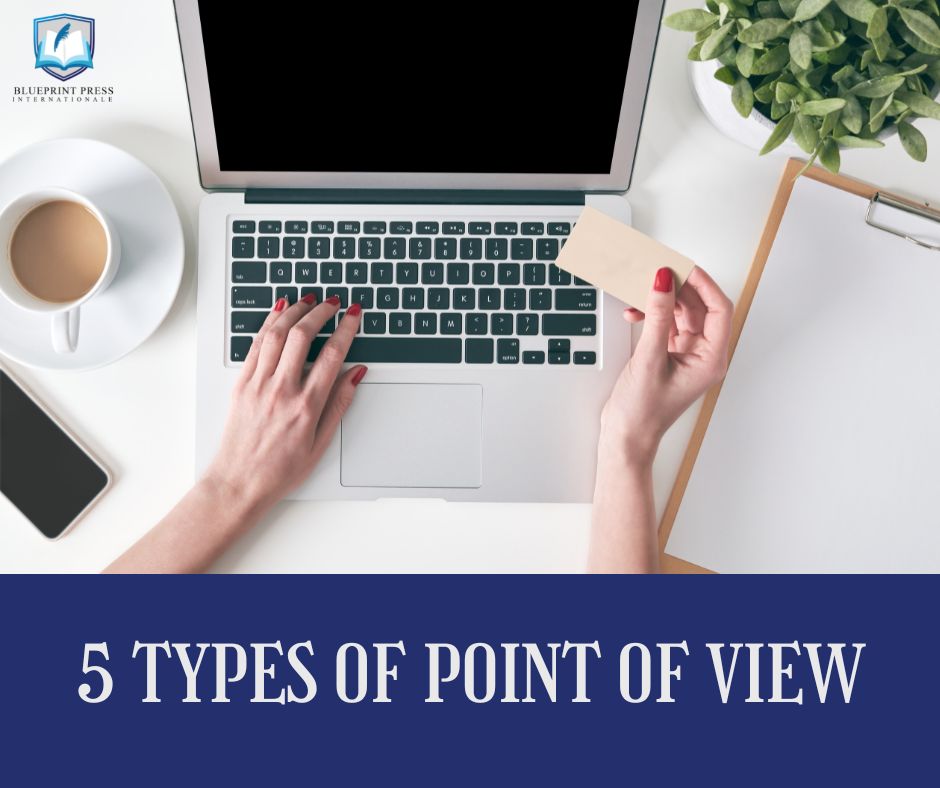The “eye” or narrative voice through which one relates a story is referred to as the story’s point of view. When you sit down to write a novel, one of the first decisions you need to make is who will be the narrator and to whom they will be telling the story.
The story could be told from the point of view of a participant in the events. It could also be said from the point of view of an outsider who is familiar with all the characters but isn’t one of them. Both of these points of view have the potential to be used.
5 Types of Point of View
First person
When a story is told from the first-person perspective, “I” am the one doing the telling. The character is present in the story and tells directly about what he or she has done.
When narrators directly address their audiences as subjects or observers of the story. They are said to be telling it from the first-person point of view, as shown in the following examples:
- The narrative consists of the narrator recounting a personal experience.
- The narrative provides an account of an event that the narrator personally observed.
- The narrator goes into detail about how he or she has prepared for something coming up.
Example: I was only seven years old when my family moved to the United States.
Second person
Perspective from the second person narrative will be delivered to “you.” Although writing from this point of view is not very common, it is still beneficial to be familiar with it.
The people who focus attention are the ones who own the point of view known as the second person. This viewpoint is from the point of view of “you.” The use of second-person pronouns, such as you, your, yours, yourself, and yourselves, is, once more, the most telling sign that the speaker is referring to the second person. You are welcome to wait here and stay at home while you do so.
Second-person narration is a form of narrative that is rarely utilized. In this type of narration, the action is driven by a character ascribed to the reader and referred to as you. The reader is brought into the story’s action and given the perspective of someone there.
Example: You are an invisible man.
Third person limited
The protagonist is either a “he” or a “she.” This is the point of view that is most frequently used in commercial fiction. The narrator is an unbiased third party who tells the story from the point of view of one of the characters.
When a story is told from the point of view of a single protagonist in the third person limited point of view. The narrator may refer to that protagonist by name or use a third-person pronoun such as they, she, or he. This type of point of view is known as a third-person limited point of view. The only place the narrator can access is the protagonist’s headspace.
Example: She couldn’t tell if the witness was lying.
Third person omniscient
Even though the story is still about “he” or “she,” the narrator is fully aware of all the thoughts and experiences experienced by the other characters in the story.
This is a common type of third-person narration in which the narrator of the story frequently appears to speak with the author’s voice. Assumes an omniscient (all-knowing) perspective on the story being told by delving into private thoughts, narrating secret or hidden events, and jumping between different locations and times.
Naturally, the omniscient narrator does not reveal all of the information to the reader or the viewer, at least not until it has the most impact. The hermeneutic code is still very much at work throughout these narrations. A narrator of this type will also reorder the story’s chronological events in a more discursive way.
Example: As the campers settled into their tents, Zara hoped her eyes did not betray her fear, and Lisa silently wished for the night to quickly end.
Third person objective
Both third-person omniscient and third-person limited points of view help you understand or feel for a character or group of characters. The writer wants you to feel a certain way about them: she wants you to like them, hate them, or trust them.
With a third-person objective point of view, the writer doesn’t add as much color to the story. With a third-person objective point of view, the story is told from the point of view of an outsider, so the reader doesn’t know everything the characters think and feel. The reader can only judge the characters based on what they do and speak.
With a third-person objective point of view, the reader is further away from the characters. It can also make things seem more mysterious.
In third-person objective narration, the narrator tells what happens without knowing what any of the characters are thinking or why. We don’t know much about what motivates them until we hear them talk or see what they do.
Example:
The people of the village began to gather in the square, between the post office and the bank, around ten o’clock; in some towns there were so many people that the lottery took two days and had to be started on June 25th. But in this village, where there were only about three hundred people, the whole lottery took less than two hours, so it could begin at ten o’clock in the morning and still be through in time to allow the villagers to get home for noon dinner.
— Shirley Jackson, “The Lottery,” 1948




